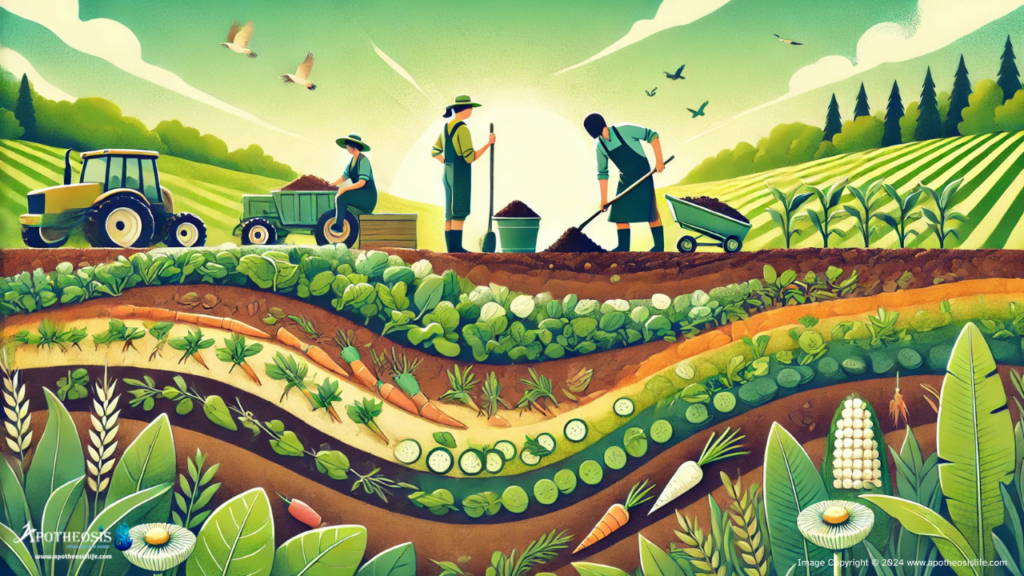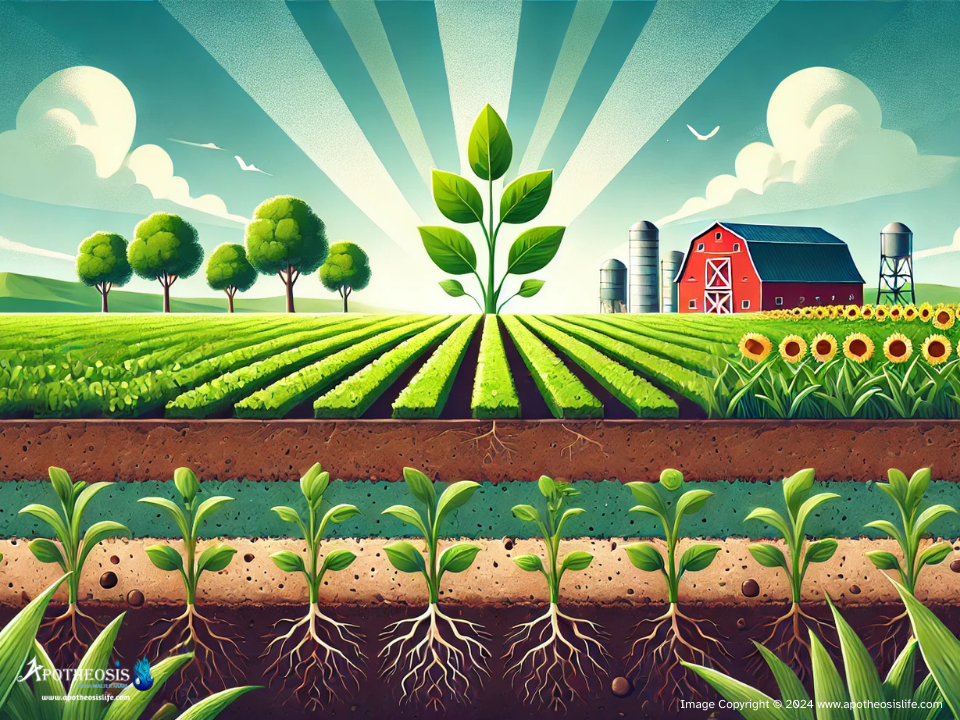Soil is the foundation of life on Earth. It supports plant growth, regulates water cycles, stores carbon, and is home to a vast array of biodiversity. Yet, soil health is often overlooked in discussions about sustainability. Degraded soils threaten food security, biodiversity, and climate resilience. Protecting and restoring soil health is essential for ensuring a sustainable future.
What Is Soil Health?
Soil health refers to the capacity of soil to function as a living ecosystem that sustains plants, animals, and humans. Healthy soil has the following characteristics:
Nutrient Balance: Adequate levels of essential nutrients for plant growth.
Biological Diversity: Rich in beneficial microorganisms, insects, and other organisms.
Structural Integrity: Ability to retain water and resist erosion.
Carbon Storage: Capacity to sequester carbon, contributing to climate change mitigation.
Why Soil Health Matters
1. Food Security
Healthy soil is critical for agriculture, providing the nutrients and structure that crops need to grow. Without healthy soil, yields decline, and food systems become more vulnerable to environmental shocks like droughts and floods. According to the Food and Agriculture Organization (FAO), 95% of the world’s food depends on soil.
2. Climate Mitigation
Soil acts as a significant carbon sink, storing more carbon than the atmosphere and all plant life combined. Degraded soils, however, release stored carbon into the atmosphere, contributing to climate change. Practices that enhance soil health, such as no-till farming and cover cropping, can help sequester carbon and mitigate global warming.
3. Water Regulation
Healthy soils regulate water by absorbing and retaining rainfall, reducing runoff and flooding. They also filter water, ensuring that groundwater supplies remain clean and abundant. Degraded soils lose their ability to perform these functions, leading to water scarcity and pollution.
4. Biodiversity
Soil is home to an extraordinary diversity of life, from microbes to earthworms. These organisms play a crucial role in nutrient cycling, decomposition, and plant health. Biodiversity in the soil is also essential for resilient ecosystems, as it enhances the soil’s ability to recover from disturbances.

Image Copyright © 2024 www.apotheosislife.com
Causes of Soil Degradation
Despite its importance, soil health is under threat from human activities:
Intensive Agriculture: Practices such as overuse of chemical fertilizers, monocropping, and excessive tilling degrade soil structure and reduce fertility.
Deforestation: Clearing forests for agriculture or urban development exposes soil to erosion and nutrient loss.
Overgrazing: Overgrazing by livestock compacts soil and removes vegetation cover, increasing erosion.
Industrial Pollution: Contaminants from mining, factories, and waste disposal can poison soils, rendering them infertile.
Climate Change: Rising temperatures and unpredictable rainfall patterns exacerbate soil degradation by increasing the frequency of droughts, floods, and erosion.
Solutions to Improve Soil Health
1. Regenerative Agriculture
Regenerative agriculture focuses on practices that restore soil health and enhance its capacity to support ecosystems. These practices include crop rotation, reduced tillage, agroforestry, and organic farming.
2. Cover Cropping
Planting cover crops such as legumes or grasses during off-seasons helps prevent erosion, improve soil fertility, and enhance water retention.
3. Composting
Adding organic matter like compost enriches the soil with nutrients and promotes microbial activity.
4. Agroforestry
Integrating trees into agricultural systems protects soil from erosion, improves water retention, and enhances biodiversity.
5. Erosion Control
Terracing, contour farming, and planting vegetation buffers can reduce soil erosion in hilly or sloped areas.
6. Soil Testing and Management
Regular soil testing allows farmers to understand nutrient levels and apply fertilizers responsibly, avoiding overuse and contamination.
The Role of Policy and Education
Governments, organizations, and individuals all play a role in protecting soil health:
Policies for Sustainable Land Use: Governments should incentivize sustainable farming practices and penalize activities that degrade soil.
Educational Campaigns: Raising awareness among farmers and consumers about the importance of soil health can drive collective action.
Research and Innovation: Investing in soil science and developing technologies for soil restoration are critical for scaling sustainable practices.
Restoring and maintaining soil health is not just an environmental priority—it’s a necessity for humanity’s survival. Healthy soils are the backbone of sustainable agriculture, climate resilience, and ecosystem stability. By adopting sustainable land management practices and prioritizing soil conservation, we can ensure a thriving planet for future generations.
Details of the Featured Image
An illustration of a vibrant farmland with healthy soil layers visible beneath growing crops, surrounded by green fields and a blue sky, symbolizing soil as the cornerstone of sustainability.
Image Copyright © 2024 www.apotheosislife.com
Author
Ziara Walter Akari
© www.apotheosislife.com
Citations
- The Role of Soil in Food Security
Food and Agriculture Organization (FAO). “Soil and Sustainable Agriculture.” Available at: https://www.fao.org/. - Soil as a Carbon Sink
United Nations Environment Programme (UNEP). “The Critical Role of Soil in Climate Action.” Available at: https://www.unep.org/. - Regenerative Agriculture Practices
Rodale Institute. “Regenerative Agriculture and Soil Health.” Available at: https://rodaleinstitute.org/. - Biodiversity in Soil
Soil Biodiversity Initiative. “Protecting Soil Life for a Sustainable Future.” Available at: https://www.globalsoilbiodiversity.org/.
